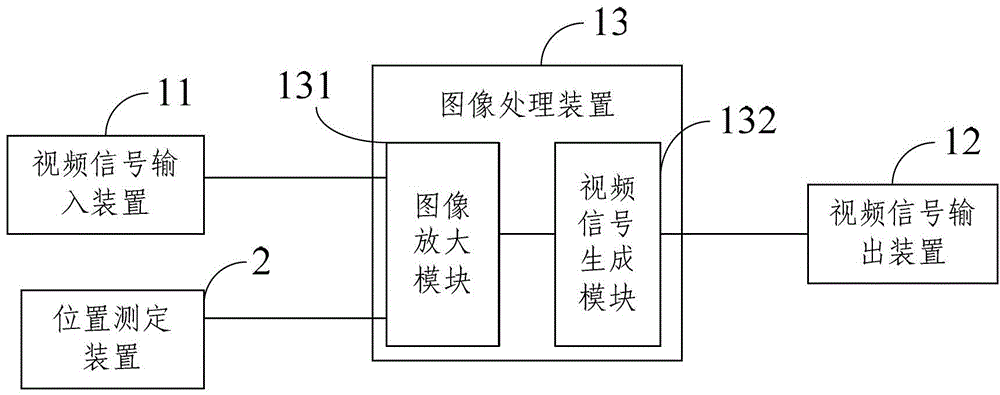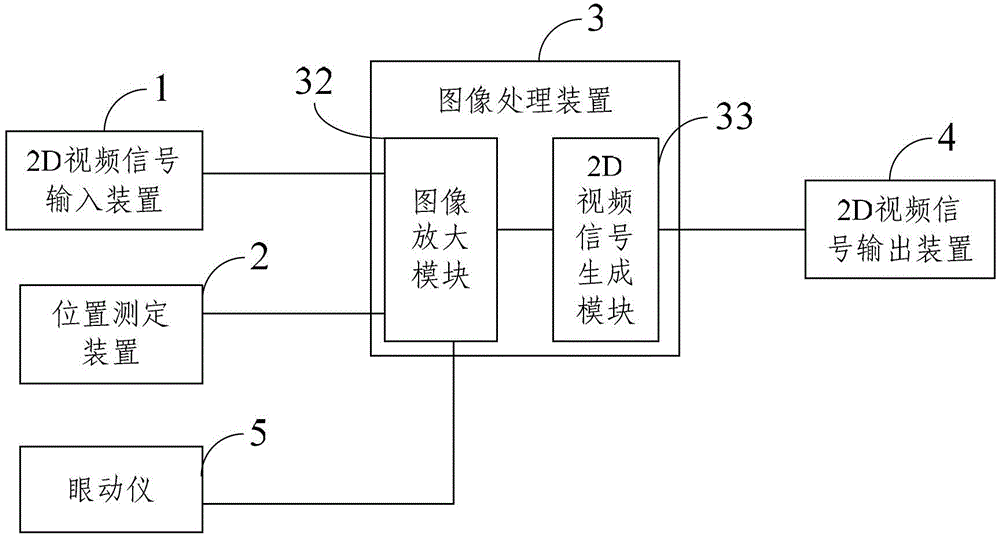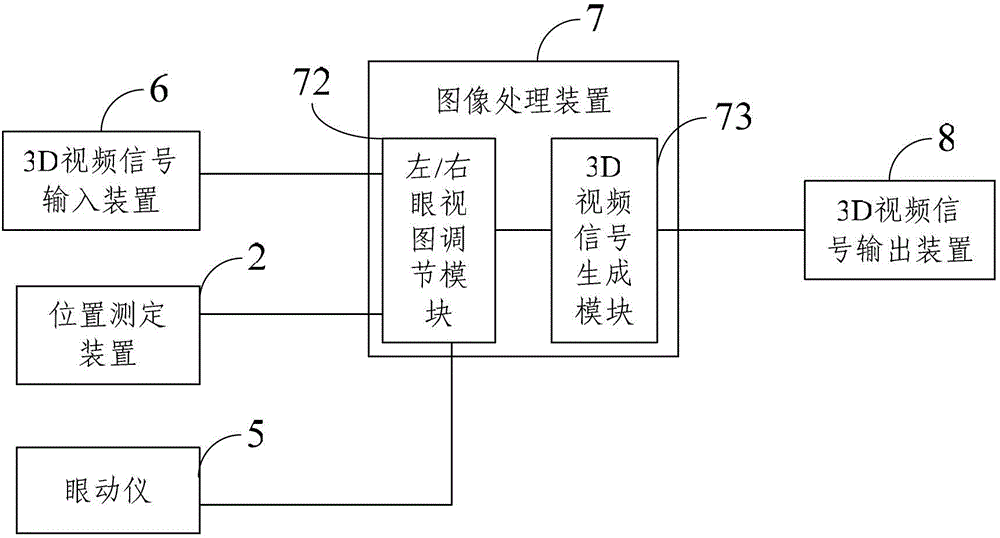Display frame adjusting device, display device and display method
A technology for adjusting devices and displaying images, which is applied to televisions, instruments, and electrical digital data processing, etc., which can solve the problems of not having local details enlarged, viewers having a weak sense of presence, and being unable to see details clearly, so as to achieve the effect of interaction
- Summary
- Abstract
- Description
- Claims
- Application Information
AI Technical Summary
Problems solved by technology
Method used
Image
Examples
Embodiment 1
[0068] The structure of the display screen adjustment device in this embodiment is as follows: figure 1 As shown, it includes: a video signal input device 11 , a position measuring device 2 , an image processing device 13 and a video signal output device 12 . The video signal input device 11 , the position measuring device 2 and the video signal output device 12 are all connected to the image processing device 13 .
[0069] The video signal input device 11 transmits the acquired video signal to the image processing device 13 . The video signal input device 11 may be various types of transmission interfaces capable of transmitting 2D video signals or 3D video signals.
[0070] The position measuring device 2 transmits the collected distance information between the viewer and the display screen before and after the change of the viewer's position (moving forward or forward or leaning forward, based on the viewer's head) to the image processing device 3 . The data acquisition f...
Embodiment 2
[0080] The display screen adjustment device of Embodiment 1 can only zoom in on the center of the image, and the surrounding images will be hidden in the border of the display screen. However, sometimes the center of the screen is not the viewpoint of the viewer, and the user experience of the display screen adjustment device in Embodiment 1 is poor. In order to achieve a better user experience, the structure of the display screen adjustment device in this embodiment is as follows: figure 2 As shown, it includes: 2D video signal input device 1, position measuring device 2, image processing device 3, eye tracker 5 and 2D video signal output device 4. 2D video signal input device 1, position measuring device 2, eye tracker 5 and the 2D video signal output device 4 are connected to the image processing device 3 .
[0081] The 2D video signal input device 1 transmits the acquired 2D video signal to the image processing device 3 . The 2D video signal input device 1 may be variou...
Embodiment 3
[0093] The structure of the display screen adjustment device in this embodiment is as follows: image 3As shown, it includes: 3D video signal input device 6, position measuring device 2, image processing device 7, eye tracker 5 and 3D video signal output device 8. 3D video signal input device 6, position measuring device 2, eye tracker 5 and the 3D video signal output device 8 are connected to the image processing device 3 .
[0094] The 3D video signal input device 6 transmits the acquired 3D video signal to the image processing device 3 . The 3D video signal input device 6 may be various types of transmission interfaces capable of transmitting 3D video signals.
[0095] The position measurement device 2 transmits the collected position information of the viewer and the display screen to the image processing device 7 before and after the change of the viewer's position (moving forward or forward or leaning forward, based on the viewer's head). The data acquisition frequency...
PUM
 Login to View More
Login to View More Abstract
Description
Claims
Application Information
 Login to View More
Login to View More - R&D
- Intellectual Property
- Life Sciences
- Materials
- Tech Scout
- Unparalleled Data Quality
- Higher Quality Content
- 60% Fewer Hallucinations
Browse by: Latest US Patents, China's latest patents, Technical Efficacy Thesaurus, Application Domain, Technology Topic, Popular Technical Reports.
© 2025 PatSnap. All rights reserved.Legal|Privacy policy|Modern Slavery Act Transparency Statement|Sitemap|About US| Contact US: help@patsnap.com



